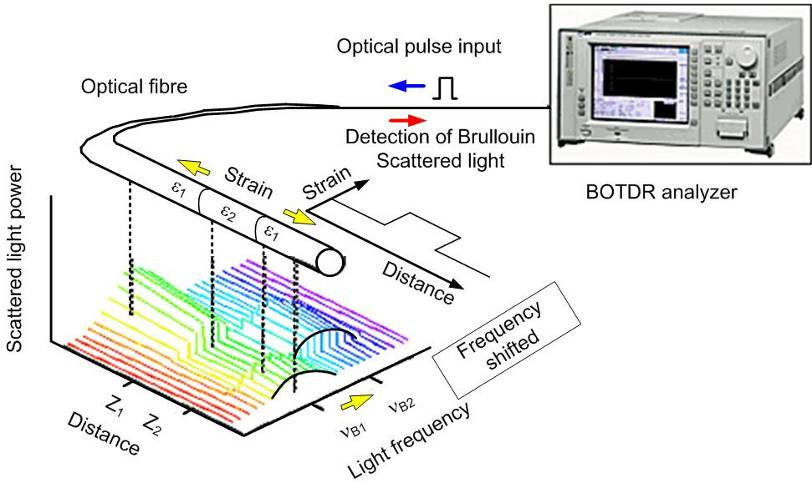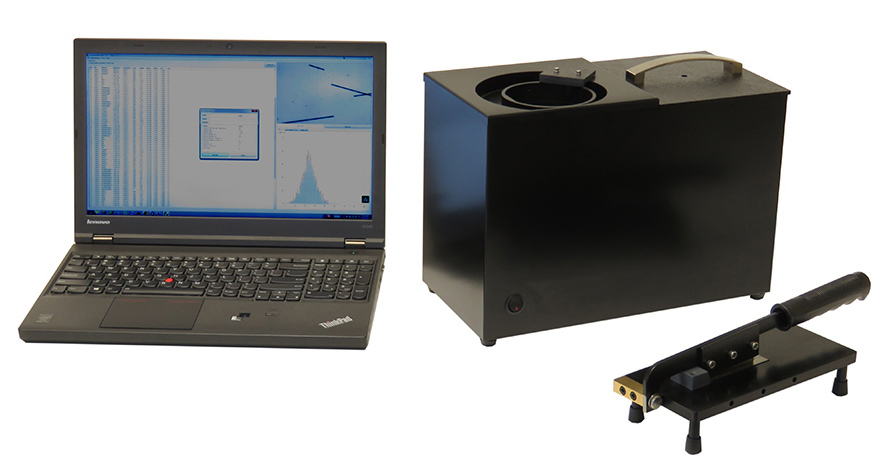Enhancing Measurements with a High-Accuracy Optical Fibre Diameter Analyser
Enhancing Measurements with a High-Accuracy Optical Fibre Diameter Analyser
Blog Article
Maximize Your Fibre Optic Efficiency: Recognizing Optical Fiber Diameter Analyser Technology
The performance of fiber optic systems is critically influenced by the precision of their diameter, an element often ignored in the quest of optimal signal stability. Comprehending the modern technology behind optical fiber size analysers discloses the complex equilibrium between dimension precision and production top quality. These gadgets not just improve conformity with market criteria but likewise supply real-time insights that can preemptively resolve prospective concerns. The ramifications of their usage extend beyond mere dimension; they can basically change the landscape of fibre optic performance. What factors should one take into consideration to harness their complete potential?
Significance of Optical Fiber Diameter
The diameter of optical fiber plays a critical role in figuring out the efficiency and performance of interaction systems. Alternatively, smaller sized diameters often tend to sustain fewer settings, which can boost signal quality and lower crosstalk.

In addition, recognizing the diameter's implications can result in cost financial savings by decreasing the demand for signal amplification and repeaters in comprehensive networks (optical fibre diameter analyser). To conclude, the relevance of optical fibre size can not be overemphasized, as it directly affects the total efficiency and integrity of modern communication systems

How Size Affects Signal Quality
Signal high quality in optical fiber systems pivots considerably on the size of the fiber. The size affects numerous vital specifications, including attenuation, transmission capacity, and modal dispersion. A smaller diameter can lead to higher attenuation prices, leading to signal loss as light travels via the fibre. This attenuation can compromise the integrity of the transmitted data, leading to a decline in signal high quality, specifically over fars away.
On the other hand, bigger sizes usually allow for enhanced light capture and decreased modal dispersion, improving signal clearness. In multimode fibres, a bigger core size can sustain several light settings, but it might additionally introduce intermodal diffusion, which can break down signal top quality. Therefore, choosing the optimum fiber size is important for attaining the wanted performance in certain applications.
Moreover, the communication in between the fiber size and the wavelength of the light utilized plays an important role in identifying the efficient transmission range and general signal honesty. Understanding just how fibre diameter affects signal quality is necessary for network designers and engineers striving to enhance optical fiber systems for trustworthy, high-speed information transmission.
Overview of Size Analyser Innovation
In numerous optical fiber manufacturing procedures, accurate dimension of fiber diameter is necessary for making certain regular performance and quality (optical fibre diameter analyser). Size analysers are innovative instruments designed to assess the physical dimensions of optical fibers with high accuracy. They employ innovative optical and laser technologies to gauge the size, ovality, and concentricity of the fibre, thus offering vital information for quality assurance
These analysers can run in-line during the production procedure or as part of off-line testing procedures. In-line systems make it possible for real-time surveillance, permitting makers to change parameters quickly, thus preserving ideal manufacturing conditions. Off-line analysers, on the various other hand, supply comprehensive analyses of batches, ensuring that any type of deviations from specified tolerances are recognized and attended to.
Diameter analysers significantly add to the reduction of problems in optical fibres, enhancing total product reliability. By continually gauging vital specifications, these innovations assist in compliance with market standards and specifications. As the demand for high-performance optical fibers remains to increase, the function of size analysers comes to be significantly crucial in achieving the desired high quality and efficiency requirements in fiber optic systems.
Secret Features of Fiber Diameter Analysers
Although various models of fiber diameter analysers exist, they frequently share numerous crucial functions that improve their functionality and reliability. Among one of the most significant functions is high-resolution measurement abilities, which make sure accurate size readings, crucial for keeping quality assurance in fiber production. Furthermore, many analysers include innovative optical sensors made to spot minute variations in fibre size, hence providing invaluable information for process optimization.
One more vital function is real-time monitoring, permitting drivers to get prompt feedback on fiber diameter throughout the manufacturing procedure (optical fibre diameter analyser). This ability helps with quick changes and minimizes the probability of flaws. Lots of analysers likewise come equipped with straightforward interfaces, allowing operators to quickly navigate with setups and information results
Moreover, robust information storage and evaluation capabilities are important for tracking historic efficiency trends and ensuring conformity with market requirements. Some models also offer connection options for combination into existing manufacturing control systems, boosting general functional performance. Portable and mobile styles permit for versatile deployment within manufacturing settings, making certain that top quality assurance procedures are smooth and efficient. These attributes jointly add to the efficacy of fiber size analysers in optimizing fiber optic performance.
Ideal Practices for Fibre Optimization

First, regular calibration of optical fibre diameter analysers is vital. This ensures accurate dimensions and decreases possible inconsistencies that can affect efficiency. Next, preserving a tidy working environment is important; dust and pollutants can lead to signify degradation.
In addition, it is vital to select have a peek at this site fibres that satisfy specific application demands. This includes reviewing variables such as attenuation, data transfer, and ecological conditions. Correct setup methods must also be followed, including preventing sharp bends and too much stress, which can jeopardize fiber stability.
In addition, using sophisticated tracking systems can promote real-time efficiency analyses, enabling prompt recognition of problems. Regular screening and maintenance need to be performed to guarantee that fibers continue to be within optimal functional criteria.
Lastly, training employees on the newest fiber optimization modern technologies and techniques will browse around this site certainly improve their capability to implement effective strategies. By complying with these finest techniques, organizations can substantially improve the efficiency and life expectancy of their optical fiber systems, making sure reliable communication and data transfer.
Final Thought
Finally, the assimilation of optical fibre diameter analyser technology is crucial for taking full advantage of fibre optic performance. By making sure accurate dimensions of fiber measurements, these analysers significantly boost signal top quality and lower losses during information transmission. Normal calibration and maintenance of the analysers are critical to support ideal efficiency and compliance with industry requirements. Ultimately, the application of this modern technology promotes improved data transmission prices and enhances signal stability, adding to the general performance of fibre optic systems.
Signal top quality in optical fiber systems pivots significantly on the diameter of the fibre.In lots of optical fiber production processes, exact dimension of fiber size is vital for guaranteeing consistent performance and quality. As the demand for high-performance optical fibres proceeds to increase, the function of size analysers becomes progressively important in accomplishing the wanted high quality and efficiency requirements in fibre optic systems.
These attributes collectively contribute to the effectiveness of fiber size analysers in enhancing fiber optic efficiency.
In final thought, the assimilation of optical fibre diameter find out this here analyser modern technology is vital for taking full advantage of fibre optic efficiency.
Report this page